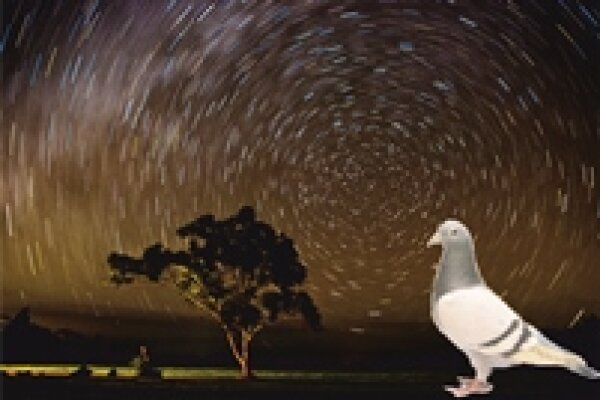2015-03-25

Birds can rely on a variety of cues for orientation during migration and homing. Celestial rotation provides the key information for the development of a functioning star and/or sun compass. This celestial compass seems to be the primary reference for calibrating the other orientation systems including the magnetic compass. Thus, detection of the celestial rotational axis is crucial for bird orientation. Now, Biologists from Oldenburg and Biopsychologists from Bochum used operant conditioning to demonstrate that homing pigeons can principally learn to detect a rotational centre in a rotating dot pattern and examined the behavioural response strategies of pigeons in a series of experiments. Initially, most pigeons applied a strategy based on local stimulus information such as movement characteristics of single dots. One pigeon seemed to immediately ignore eccentric stationary dots. After special training, all pigeons could shift their attention to more global cues, which implies that pigeons can learn the concept of a rotational axis. The ability to precisely locate the rotational centre was strongly dependent on the rotational velocity of the dot pattern and it crashed at velocities that were still much faster than natural celestial rotation. The study thus suggest that the axis of the very slow, natural, celestial rotation could be perceived by birds through the movement itself, but that a time-delayed pattern comparison should also be considered as a very likely alternative strategy.

Birds can rely on a variety of cues for orientation during migration and homing. Celestial rotation provides the key information for the development of a functioning star and/or sun compass. This celestial compass seems to be the primary reference for calibrating the other orientation systems including the magnetic compass. Thus, detection of the celestial rotational axis is crucial for bird orientation. Now, Biologists from Oldenburg and Biopsychologists from Bochum used operant conditioning to demonstrate that homing pigeons can principally learn to detect a rotational centre in a rotating dot pattern and examined the behavioural response strategies of pigeons in a series of experiments. Initially, most pigeons applied a strategy based on local stimulus information such as movement characteristics of single dots. One pigeon seemed to immediately ignore eccentric stationary dots. After special training, all pigeons could shift their attention to more global cues, which implies that pigeons can learn the concept of a rotational axis. The ability to precisely locate the rotational centre was strongly dependent on the rotational velocity of the dot pattern and it crashed at velocities that were still much faster than natural celestial rotation. The study thus suggest that the axis of the very slow, natural, celestial rotation could be perceived by birds through the movement itself, but that a time-delayed pattern comparison should also be considered as a very likely alternative strategy.